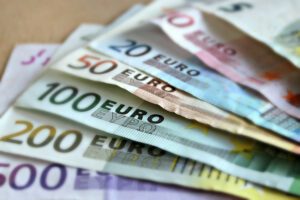
The Central Bank of Malta and the National Bank of Ukraine (NBU) have launched a program for Ukrainian refugees to exchange hryvnia for euros since August 1, the NBU press service reported.
According to the report, Ukrainians who have a certificate of protection from the International Protection Agency in Malta will be able to exchange up to UAH 10,000 for one person.
Banknotes from UAH 100 to UAH 1,000 are accepted for exchange.
As reported, the hryvnia cash exchange program has already been launched in Poland, Germany, Belgium, Sweden, Italy, the Netherlands and Switzerland.

Slovakia will continue to pay for Russian gas in euros in accordance with the agreed rules, Slovak Prime Minister Edward Heger said.
“The company Slovensky plynarensky priemysel (Slovak gas industry) has signed a long-term contract with the Russian Gazprom and payments for the purchased gas will be made in euros in accordance with the agreed rules and recommendations of the European Commission,” Heger wrote on the social network.
Slovensky plynarensky priemysel is the largest oil refinery in the country.
The Prime Minister also announced on Twitter (SPB: TWTR) that Slovakia, together with the EU, will accelerate the move away from gas dependence on Russia.

The share of U.S. dollars of Ukraine’s forex reserves by late 2017 was 71%, the National Bank of Ukraine (NBU) has said in an annual report for 2017.
“The National Bank, like most central banks in the world, preferred investing reserves in U.S. Treasury bonds. The foreign exchange structure of forex reserves by the end of the year was as follows: 71% – U.S. dollar, 12% – euros, 4% – Chinese yuan, 3% – British pound sterling, 6% – gold, 4% – other currencies,” the NBU said in the report.
In addition, according to the NBU report, in the structure of forex reserves in terms of tools 78% accounted for bonds, 16% – for funds in banks, and 6% – for gold, including 53% of bonds in the structure of reserves were public, 40% – quasi-public, 7% – of issuers of the financial sector.